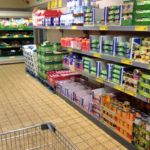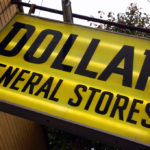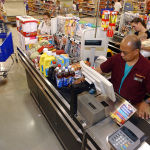Walmart advertises “everyday low prices”, while your typical grocery store has huge markups to help offset the handful of deep discounts they advertise every week. So that must mean that Walmart has the best prices on a typical basket of everyday grocery purchases, while grocery stores have the worst.
A new survey says that’s not necessarily so. Instead, it crowns Dollar General the low-price leader – and brands Target the highest-priced of all.
But there’s a catch.
The fourth annual Kantar Retail report focuses on “opening price points” – the lowest price offered in an entire category of products. Take cereal, for example. Target’s cheapest item in the entire cereal aisle might be a $2.39 box of Cheerios, while ALDI’s cheapest might be a smaller box of store-brand Millville Crispy Oats for $1.49. So in this comparison, ALDI wins, even though it’s not exactly apples-to-apples – especially if Target’s price-per-ounce is better.
But that’s “opening price points” for you. If you need cereal, and peanut butter, dish soap, diapers, etc. and you’re after the cheapest packages you can possibly find, no matter the size, Kantar says Dollar General is the place to go.
Ignoring unit pricing is not exactly the most efficient or cost-effective way to shop. But Kantar says many cash-strapped shoppers don’t have a choice. “For shoppers on highly constrained budgets, the value offered by bundled solutions or multi-packs with low price to volume ratios is not relevant given the relatively high cash outlay required at the time of purchase,” Kantar explains. “Instead, these shoppers tend to seek out opening price points in order to make the most efficient use of their tight budgets.”
Kantar checked the prices of 20 typical grocery purchases at six New England stores – Walmart, Target, Family Dollar, Dollar General, ALDI and Stop & Shop (representative of a “typical grocery store”). Researchers sought out the lowest price point in each category, regardless of brand or size (though trial sizes were excluded) “so that the budget-strapped shopper could minimally meet her purchase requirements across categories.”
And for the third year in a row (see last year’s results, and the results from 2012), Dollar General won. Its total of $26.75 edged out Walmart’s $27.41. Family Dollar, Stop & Shop and ALDI followed, with Target’s $40.61 weighing in as the largest total – more than 50% higher than Dollar General’s.
That said, there are plenty of caveats in a study like this.
ALDI actually beat everyone in the edibles category, with cheaper cereal, tuna, pasta sauce, bread and milk than anyone. In fact, its cheapest pasta sauce was a mere 25 cents (though it was for a pretty tiny can, compared to higher-priced, cheaper price-per-ounce jars at other stores). But ALDI got demolished in the health and beauty item category, with Walmart having the lowest prices on bar soap, toothpaste, shampoo, pain relievers and disposable razors. Dollar General’s winning margin in the non-edibles category – including the lowest prices on laundry detergent and diapers – was enough to give it an overall price victory.
Another caveat is the store that Kantar didn’t include. Walgreens made an appearance in the first and second annual studies, but was dropped last year because its prices were off the charts compared to the others. So Target may have fared worst in this study, but that’s only because no one goes to a drug store looking for the cheapest opening price point on anything.
So which store would be your best bet, if you’re looking for overall low prices, and not just the smallest, cheapest thing you can find? Dollar General, Kantar observes, seems to be “leveraging” non-edibles, keeping those prices especially low and other categories higher, so it can claim an overall win.
As for its dollar-store competitor, “in the face of rising food inflation, Family Dollar struggles to provide shoppers with the means to stay on budget,” Kantar states. Family Dollar’s new ad match campaign is seen as a way to help cash-strapped shoppers, without actually committing to having the lowest prices.
Stop & Shop and Target had the most items on sale in the pricing survey, but their regular prices offset those savings. Therefore, Kantar concluded, “low-income shoppers seem more likely to cherry pick” those stores, buying what’s on sale and doing the rest of their shopping somewhere else.
And Walmart may well reclaim its position as the low-price leader, by the time next year’s price survey rolls around. It’s in the process of introducing a new “Price First” line of grocery products whose very labels scream “opening price point”. If you remember seeing cans of supermarket peas with stark black-and-white labels reading “PEAS”, then you’ll recognize the look Price First is going for. Unless Dollar General is prepared to do the same, Walmart could end up winning next year’s edibles category, and the whole survey.
The answer to which store is your best bet then, depends on whether you’re a cherry picker, a couponer, whether you buy in bulk, or buy whatever you need at the lowest price possible. If a 25-cent can of pasta sauce is enough for you, great. But if it takes 12 of those cans to fill your pot, buying a larger jar at Target would be a much better value.
So this all makes for interesting retail studies. But in reality, if you have a family to feed, “opening price points” can only get you so far.














